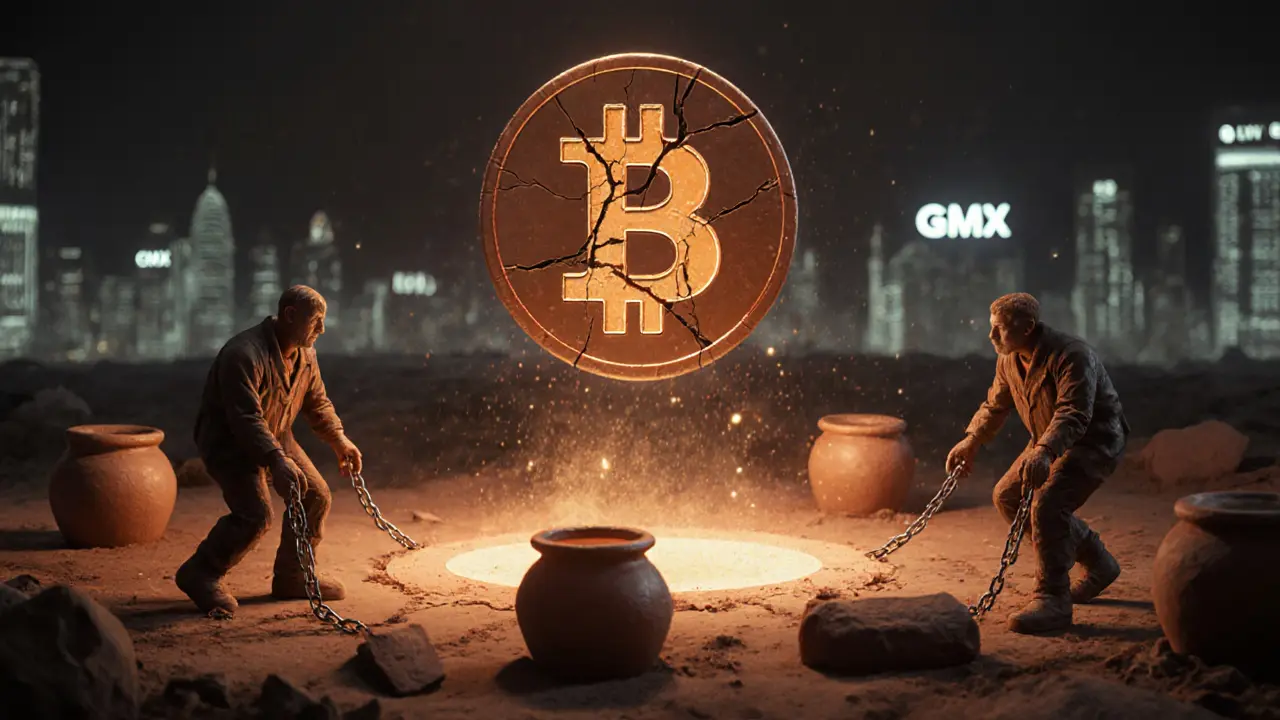What is Levana Protocol (LVN) Crypto Coin? A Realistic Look at Its Tech, Risks, and Current State
 Jan, 1 2025
Jan, 1 2025
Levana Protocol Gains Simulator
How Levana Protocol Works
Levana Protocol's unique design caps your maximum profit based on the pool's available liquidity. Unlike traditional perpetual swaps where gains can be unlimited, LVN sets a maximum return when trading with leverage.
Results
| Scenario | Profit/Loss | Max Possible Gain |
|---|---|---|
| Traditional Perpetual Swap | N/A | |
| Levana Protocol | Capped |
Levana Protocol (LVN) isn't another meme coin or speculative token. It was built as a solution to a real problem in crypto derivatives: traders losing money because platforms weren't fully collateralized. But today, it's struggling to survive. If you're wondering whether LVN is worth your time, here's the unfiltered truth - no hype, no fluff.
What Levana Protocol Actually Does
Levana Protocol is a decentralized platform for trading perpetual swaps - a type of derivative contract that lets you bet on price movements without owning the underlying asset. Think of it like futures trading, but without an expiration date. What made it different was its core design: no position could ever be undercollateralized.
Most crypto derivatives platforms, like GMX or Kwenta, rely on external price feeds and allow traders to open leveraged positions that can exceed the collateral in the system. When markets crash - like during the LUNA collapse - those platforms get hammered. Levana avoided that by locking up all liquidity. If you wanted to trade BTC with 10x leverage, the protocol didn't just let you borrow money. It forced you to trade within a fixed pool of locked assets. Your maximum profit? Limited to what was already in that pool. No surprises. No systemic risk.
This wasn't just theory. Reflexivity Research called it a "transformative project" in early 2024 because it actually solved the solvency problem that plagued other platforms. But there was a trade-off: you couldn't make big wins. If BTC jumped 20%, your profit was capped. For some, that felt like playing with one hand tied behind your back.
The LVN Token and Its Broken Tokenomics
The LVN token was meant to be the backbone of the protocol - used for governance, staking, and incentivizing liquidity providers. But its design was flawed from the start.
There are 1 billion LVN tokens in total. As of early 2024, only 5% were circulating. The rest were locked up, scheduled to unlock in batches starting in 2025. That’s a massive flood of new supply coming into the market with no demand to absorb it. By November 2024, the price had crashed from a peak of $1 to under $0.005 - a 99.5% drop. That’s not market correction. That’s a collapse.
Delphi Digital put it bluntly: protocols with daily trading volume below $100,000 face existential threats. Levana’s 24-hour volume hovered around $55 - less than what a single whale might move on a major exchange. With so many tokens about to unlock and so little trading activity, the token’s value has no foundation. It’s not a currency. It’s not a utility. It’s a sinking ship.
Why No One Is Using It
Numbers don’t lie.
- Market cap: ~$5 million (as of Nov 2024)
- Trading volume: ~$55 in 24 hours
- Active addresses in 30 days: 127
- Twitter followers: 1,200 (GMX has 250,000+)
- Telegram members: 1,842 (with 3-5 messages per day)
Compare that to GMX, which handles billions in volume and has thousands of active traders daily. Levana doesn’t just lag behind - it’s invisible in the market. CryptoSlate users gave it a 2.1/5 rating. Common complaints? "Too little liquidity," "confusing interface," and "no one’s trading." One Reddit user said he pulled his liquidity after two trades because the capped gains made it impossible to profit during strong trends.
Even within the Cosmos ecosystem - where it was built - adoption is near zero. Most Cosmos-based DeFi projects have hundreds of thousands in TVL. Levana’s liquidity pools? Barely above $1 million. And most of that is likely just stakers holding tokens, not active traders.

The Rujira Network Transition - A Last-Ditch Effort?
In August 2024, the Levana team announced a major shift: moving the entire protocol to the Rujira Network (RUJI). This wasn’t just a technical upgrade. It was a full reset.
The move was framed as a way to improve scalability and integrate better with other Cosmos chains. But for users, it meant one thing: your positions, your liquidity, your LVN tokens - everything had to be migrated. No one knew exactly how. The official documentation was incomplete. The Telegram group was silent. GitHub issues piled up with reports of liquidation errors and unclear migration steps.
By July 2025, CoinMarketCap noted the transition was underway. But no one was talking about it publicly. No press releases. No community events. Just a quiet migration in the dark. That’s not innovation. That’s desperation.
Is It Safe to Use? The Risks Are Real
Technically, Levana’s architecture is sound. The locked liquidity model prevents insolvency. That’s a win. But safety doesn’t matter if no one’s using it.
Here’s what you’re really risking:
- Token value collapse: LVN is likely to keep dropping as more tokens unlock.
- Platform abandonment: If the Rujira migration fails, the protocol could become unusable.
- Zero support: Customer service doesn’t exist. Telegram responses take days. No Discord. No help docs.
- Regulatory blind spot: It offers leveraged trading. That’s a red flag for U.S. regulators. If the CFTC cracks down, Levana won’t be the first to vanish.
Even if you believe in the tech, you’re betting on a team that has shown no ability to grow adoption, communicate clearly, or manage token supply. That’s not investing. That’s gambling.

Who Should Even Consider LVN?
No one. Not really.
If you’re a developer who wants to study how locked liquidity works - sure, read the whitepaper. But don’t stake your money on it.
If you’re a trader looking for high-leverage opportunities - skip it. The capped gains make it useless.
If you’re a long-term investor hoping for a comeback - the math doesn’t work. With 95% of tokens still locked and no demand, there’s no path back to value.
Even the most optimistic analysts at Reflexivity Research admitted the protocol faces "meaningful unlocks and token inflation" - and that’s their best-case scenario.
The Bottom Line
Levana Protocol (LVN) was an interesting idea. It tried to fix a real problem in crypto derivatives. But it failed at the most important part: getting people to use it.
It’s not a coin you buy. It’s a case study in what happens when good tech meets terrible execution. The protocol’s architecture is clever. The tokenomics are a disaster. The user base is microscopic. The transition to Rujira is shrouded in silence.
If you’re reading this because someone told you "LVN is going to 10x," walk away. It’s not coming back. The market already voted - and it chose not to show up.
There are better ways to trade perpetuals. There are better tokens to hold. Levana is not one of them.
Kristi Malicsi
November 26, 2025 AT 22:54its like buying a sports car that can only go 40 mph
Rachel Thomas
November 28, 2025 AT 06:25